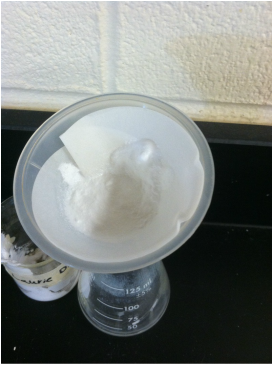

It is time that we develop a molecular level understanding on how to deal with oil paint defects that develop when the network can’t be stabilised with suitable metal cations.” Why “Flake White” and “Cremnitz White” for Lead White It is my belief that the period 1950–2000 will bring us many defects in the oil paints that are now maturing. I don’t think that that magical material has been found yet simply because we only very recently have begun to understand the molecular structure of paints. “No lead means that something else has to take over these roles. And furthermore, it provides a filling material and surfaces for oil-derived compounds to dock.” At a later stage when the biological ester bonds are gone, it further stabilises the diacids to form a network that is hard to break. It links the acids groups of C9 diacids even when they are still acylglycerides thus stabilising the early film (proven by NMR work of Michiel Verhoeven in 2006).
#Pbco3 precipitate color free
It reacts with free acids that develop by oxidation of the oil. It is a bulk drier that means homogenous drying over the paint film. Jaap Boon, University of Amsterdam and AMOLF and formerly head of the MolArt Project, offered these important insights into the role of lead white in oil paint film:

Lead white also serves to preserve the flexibility of oil paint, extending the life of the paint film. It also gives it the qualities in oil paint often sought after by artists. It is this element that gives added opacity to lead white. Basic lead carbonate contains from 25 to 30 percent lead hydroxide, which distinguishes it from normal lead carbonate. The other varieties of lead carbonate have not been reported in paintings, except as impurities. Normal lead carbonate (PbCO 3) or other lead carbonate compounds have at times been mistakenly identified as basic lead carbonate, which has the chemical formula 2PbCO 3 Lead white oil paint is made by grinding basic lead carbonate (the chemical name for lead white pigment) in vegetable drying oil. The power that is gives of making strokes of light as incisive as strokes of dark is fundamental to the technique of painting. If lead white were not dense and opaque, it would be necessary to put it on thickly where, since it is both dense and opaque, a thin coat of it will serve. The density of lead white and its opacity are very important to painters. It was first identified in literature as a pigment by Pliny, who mentions it, among other colors, as used by the ancients to paint ships. It was known to the ancient Egyptians, Greeks and Romans and commonly used in the preparation of ointments and plasters, as well as cosmetics. Lead white is the most important white pigment used in painting throughout history.


 0 kommentar(er)
0 kommentar(er)
